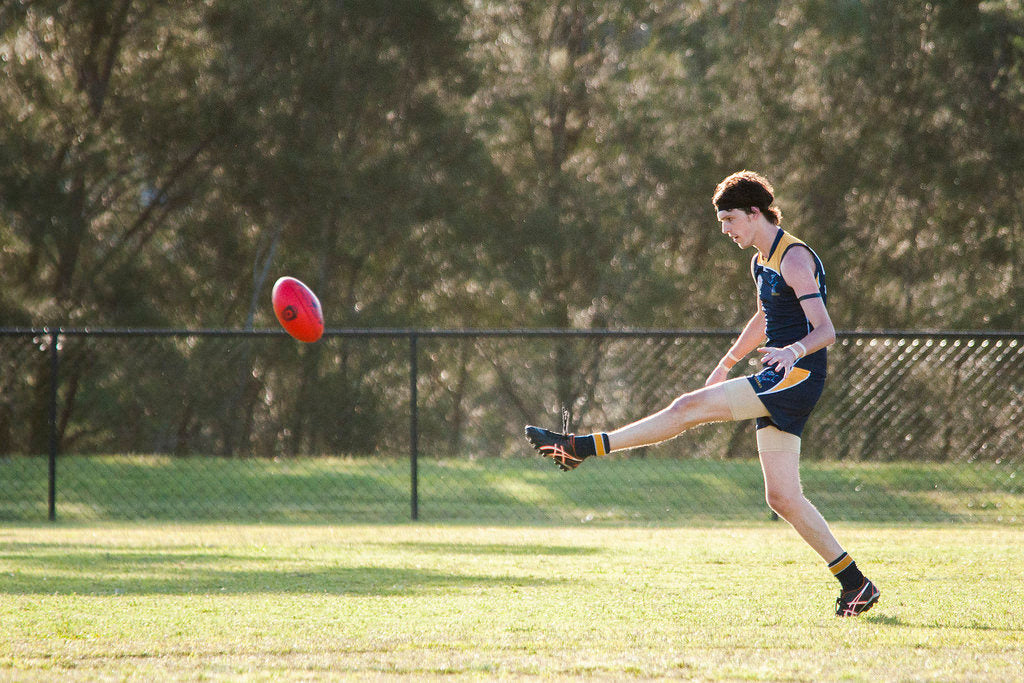Apr 17, 2019
Common AFL injuries and the importance of recovery
AFL or ‘Footy’ is regarded as one of the toughest and most gruelling sports involving human endurance and physicality going around. On average, a player will run a total of 14km per game with some midfielders racking up as much as 18-19km per game. With tackling, kicking, sprinting and competing for the ball, footy certainly is tough on the body! Most sports require some level of fitness which is broken down into several components and are essential in order to successfully contend at the sports’ high level of competitiveness. Footy for instance has eleven such components with speed, aerobic power, anaerobic capacity, muscular power, agility and balance to name a few.
Common Injuries
According to Sports Medicine Australia, the most common injuries experienced by players are caused by tackling/collisions with other players, being hit by the ball and general falls. Injuries to the thighs, knees, ankle and lower leg region are the most common non-hospital treated injuries. The most common injury among top players are hamstring strains due to the demanding and explosive nature of the sport. The good news however is that the prevalence of injury is decreasing due to safer training techniques being used by clubs. Being the rough contact sport that it is, eliminating injuries completely is an impossible task to achieve but preventing these injuries can be a worthwhile endeavour to undertake for existing or new players.
Preventing Injuries
Preparing oneself for the strenuous nature of footy can be hugely beneficial in reducing the chance of picking up an injury. Better Health Victoria outlines several ways in which a player can prepare their body which includes;
- Train and condition your body prior to the season commencing as this can improve your strength, stamina, flexibility, agility and balance
- Practice and learn to use the correct skills and techniques
- Always stretch and warm up before exercising or competing in a match
- Be conscious of your diet ensuring that it is nutritional and balanced
- Maintain a good standard of hydration and have the necessary electrolyte replacements on hand for fluid recovery
- Try to avoid alcohol before or after a game and limit your consumption during the season
Recovery Importance & Tips
Recovery has come a long way over the years. Gone are the days when players would finish up a game and head to the sheds for a beer or two. Nowadays there are structured recovery protocols that professional clubs follow to ensure their players’ bodies are looked after and performing at their best week after week. These recovery techniques can include cool rooms/cryotherapy chambers, ice baths, electronic compression garments, water therapies and strict diets. The importance of these procedures can not be overstated enough as without proper recovery techniques, the body has a greater chance of becoming more susceptible to fatigue resulting in muscle strains and tears.
For smaller clubs and teams, whom make up the majority of the sport’s players, these recovery techniques aren’t viable or available due to cost and availability. Affordable options do exist that are of great benefit to young players and veterans alike;
- Water Recovery/Bathing – This is a technique that is commonly used by contact sport players as it gives muscles the opportunity to relax and promote elasticity. The recovery can be in the form of an ice bath, which is predominantly done to tighten your muscles/blood vessels in order to drain lactic acid buildup in muscles. On the flip side, a warm bath is performed to promote relaxation and elasticity of the muscle as well as directing blood flow to muscles as the heat helps to dilate blood vessels. Baths also give users the opportunity to add recovery aides to the bath such as magnesium, proven to assist in muscle and injury recovery as well soda crystals which have been used by footy players for years to alleviate muscle soreness and promote recovery.
- Massage – Manipulating the body’s soft tissue helps to relieve muscle tension by promoting blood flow to the area as well as warming the muscle to make it more elastic.
- Stretching – Passive stretching helps to increase muscle movement and agility which is important both before and after exercise.
Head to our page, Bexters.com.au, for more information regarding recovery, swelling and general product information. Also, this month we are offering an AFL Prize Pack valued at $205! Head to our Instagram @bexters_aus or Facebook @bextersaus next week and keep a look out for information on how to participate!
